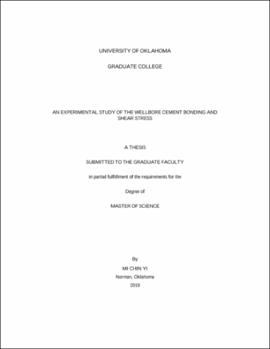| dc.description.abstract | Well Integrity is considered one of the most important topics in petroleum
industries. A failure of well integrity causes many undesirable consequences such
as loss of human lives, loss of drilling equipment or production facilities, loss of
hydrocarbon reserves, and pollution. (Santos 2017)
A successful cementing is a major contribution that leads wellbore integrity to be
secured. Because cementing is a complex job that is involved with many variable
factors, it is important to understand wellbore cementing behaviors in various
environments and factors that affect to it.
Wellbore integrity issues should be observed not only during a well is producing
hydrocarbons but from the well construction phase to the well abandonment.
Likewise, cementing should stay healthy throughout the entire well life. As more
wells have been drilled and abandoned over the years, more researchers have started
to pay attention to well integrity issues. With this trend, efforts to understand
cement behaviors have been increased. As mentioned earlier, cementing is not as
simple as it sounds due to various factors involved to its chemistry, mechanics and
many others. Therefore, factors that cause cement failure can be diverse.
Plenty of studies have focused on cement compressive and tensional strength to
investigate cement mechanics affected by forces. Some researchers also have
investigated bonding stresses of contact between cement and casings. These studies
xi
have found de-bonding at contacts between cement and casings or casing and
formation to explain wellbore integrity failure. However, field data show that there
is no correlation between de-bonding theory and the casing movement. If that is the
case, the major assumption is made that cementing hardware such as centralizer or
thread collars do not restrict casing axial movement, and the regional stresses
caused at near couplings could be huge influences to wellbore failures.
With this hypothesis, this master’s thesis introduced a new method to investigate
special cement properties (pure cement shear, bonding, and Unconfined
Compressive Strength) caused at near casing as well as coupling installed area by
replicating the interaction between the casing coupling and cement in a lab size. | en_US |
